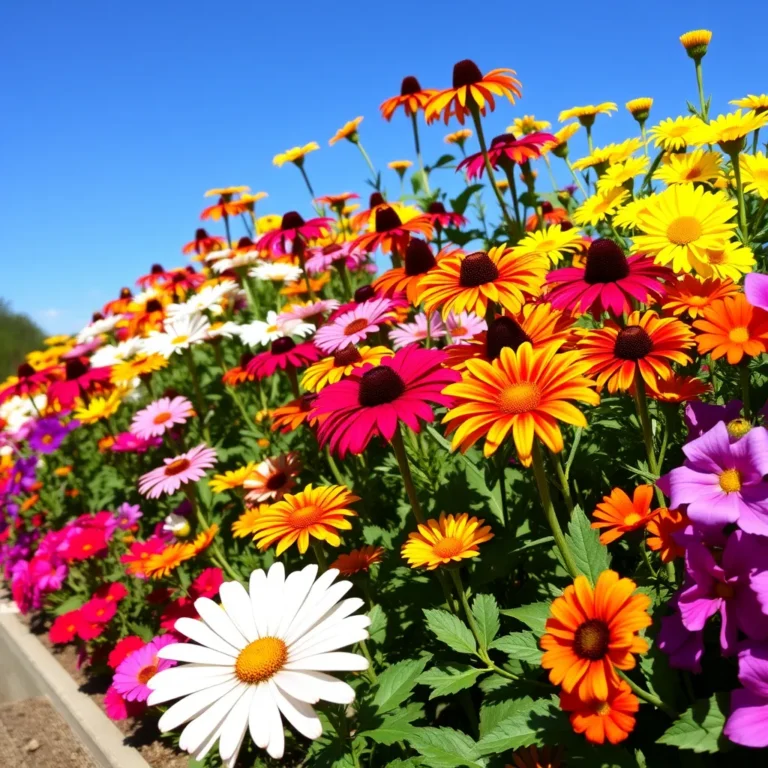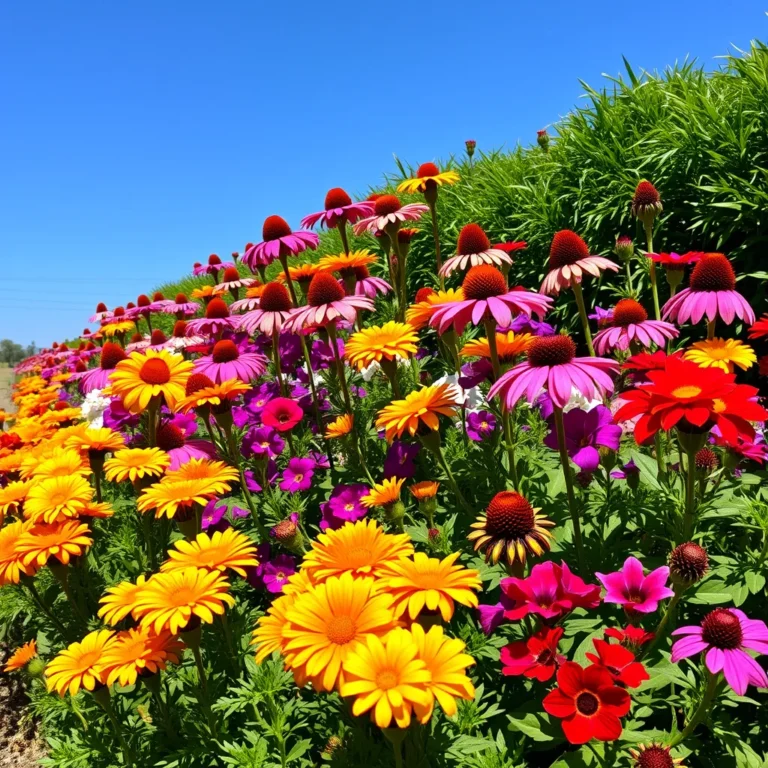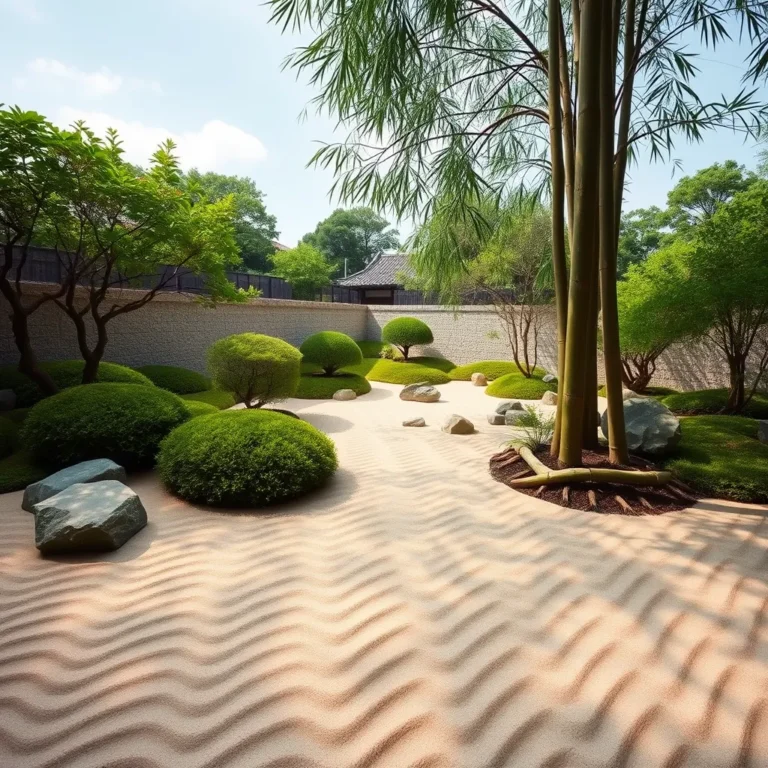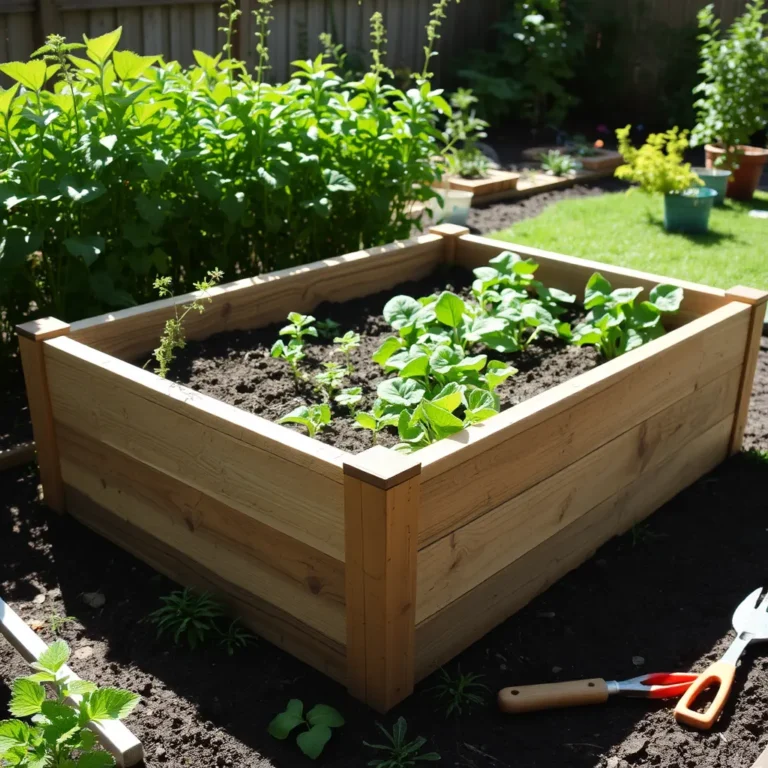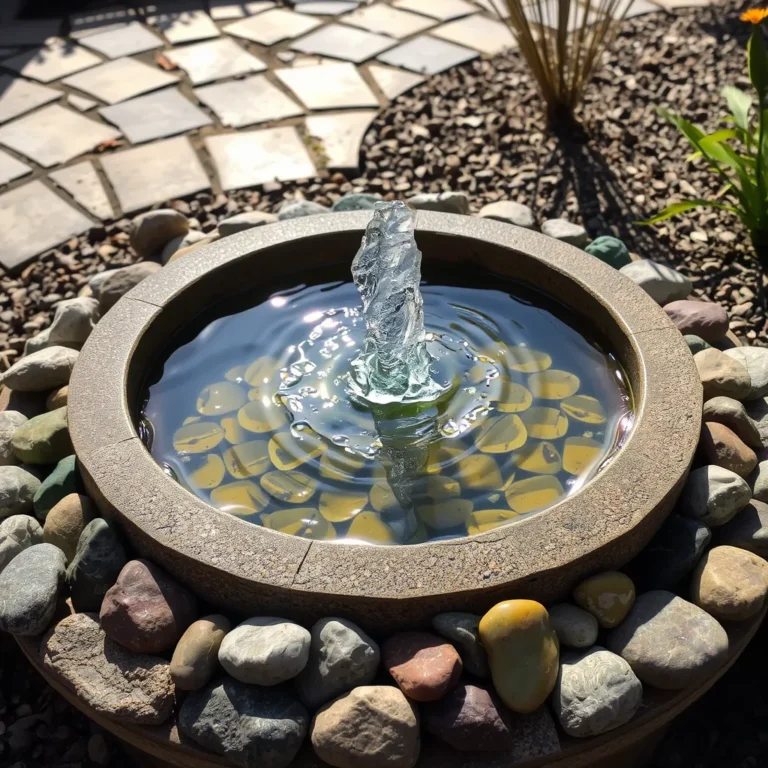9 Innovative Irrigation Solutions for Thriving Gardens
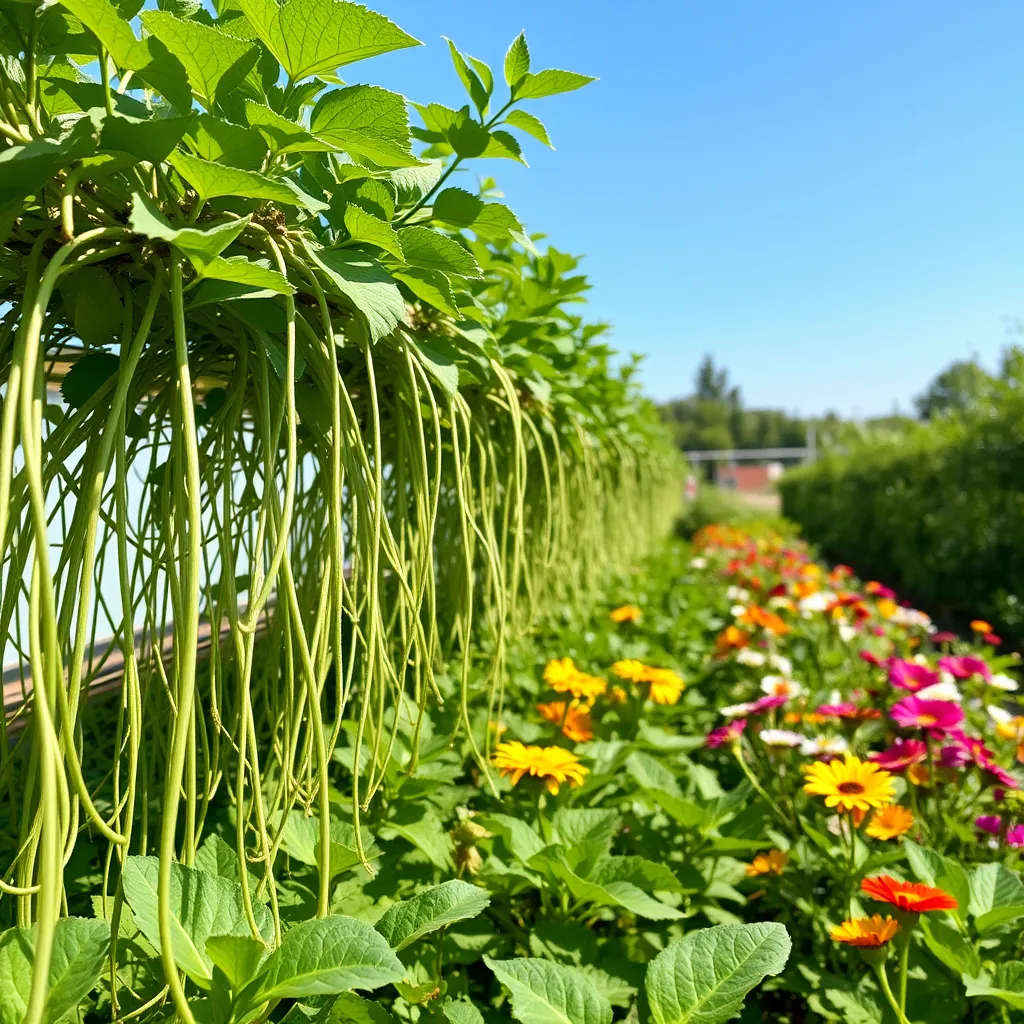
Are you ready to transform your garden into a thriving oasis? In this article, I’ll introduce you to 9 innovative irrigation solutions that can boost your garden’s health and save water. From smart drip systems to rainwater harvesting, I cover how these methods work, their benefits, and how to get started. Say goodbye to wasting water and hello to a vibrant garden that flourishes!
Smart Drip Irrigation Systems: Revolutionizing Watering Efficiency

Smart drip irrigation systems deliver water directly to your plants’ roots. These systems use tubes with small holes to drip water slowly. This method helps plants get the moisture they need without waste.
Using smart technology, these systems can cut water usage by up to 50%. They target specific areas, so each plant gets just the right amount. This precise watering leads to healthier plants and less water waste.
To set up a smart drip irrigation system, follow these steps:
1. Plan your layout: Decide where to place the drip lines.
2. Install the main line: Connect it to your water source.
3. Add drip tubing: Attach tubes to the main line where needed.
4. Connect smart devices: Use a mobile app to monitor and control watering.
With mobile apps, you can track water needs and adjust settings easily. This keeps your garden thriving while saving water.
Rainwater Harvesting: Sustainable Solution for Garden Irrigation

Rainwater harvesting systems collect and store rainwater for garden use. You can set up a system with tanks and gutters. This method helps you save water and money.
– Cost savings: Using rainwater cuts your water bill. It reduces the need for tap water.
– Environmental impact: Collecting rainwater helps reduce stormwater runoff. It keeps your plants healthy and happy.
To install a rainwater system, follow these tips:
1. Choose a tank: Pick a tank size based on your garden needs.
2. Install gutters: Attach gutters to your roof to funnel rainwater.
3. Connect pipes: Use pipes to link gutters to your tank.
4. Add a filter: Install a filter to keep debris out of your water.
5. Use a pump: A pump helps move water from the tank to your plants.
Rainwater harvesting is a smart choice for your garden. It saves resources and supports a greener planet.
Soaker Hoses: An Efficient Alternative for Flower Beds

Soaker hoses are tubes that release water slowly. You place them in your flower beds to give plants steady moisture. These hoses work well for all types of gardens.
Using soaker hoses has many benefits. First, they deliver water directly to the roots. This helps plants grow strong. Second, they reduce evaporation. You waste less water, which is good for the planet and your wallet.
To get the most from soaker hoses, follow these best practices:
– Placement: Lay the hoses close to your plants. Bury them under mulch for better water retention.
– Spacing: Space the hoses 12 to 18 inches apart. This ensures even water coverage.
– Maintenance: Check for blockages and leaks regularly. Clean the hoses at least once a year to remove dirt.
With soaker hoses, you can keep your garden healthy and save water at the same time.
Intelligent Sprinkler Timers: Automate Your Watering

Intelligent sprinkler timers are tools that help you control your garden’s water. They allow you to set specific times for watering. You can program them to water your garden when you want. Smart controllers can even adjust based on weather changes.
These timers save you time and effort. You don’t need to worry about forgetting to water your plants. They ensure optimal watering schedules, keeping your garden healthy.
When choosing the right settings, think about the seasons. In spring, your plants may need more water as they grow. In summer, water early in the morning to avoid evaporation. In fall or winter, cut back on watering as plants slow down.
Look for timers with features like rain delays or soil moisture sensors. These features help save water and keep your garden thriving.
Greywater Recycling: Utilizing Household Water for Gardens

Greywater recycling uses water from your home to water your garden. This water comes from sinks, showers, and washing machines. It is not safe for drinking but is great for plants.
Using greywater saves fresh water and cuts down your water bill. You help the environment by reusing water instead of wasting it. This system can lower your impact on local water sources.
To use greywater safely, follow some guidelines. First, use only safe soaps and cleaners. Avoid harsh chemicals that can harm plants. Second, choose plants that can handle this type of water. Many flowers and shrubs do well with greywater.
You can set up a simple greywater system. Connect a pipe from your sink or shower to a container. This container can then water your garden. Make sure to keep the system clean to avoid issues.
By recycling greywater, you make your garden thrive while saving money and resources. It is a smart way to care for both your plants and the planet.
Subsurface Irrigation: Hidden Efficiency for Larger Gardens

Subsurface irrigation uses buried pipes to deliver water. This method sends water directly to the roots. It keeps the soil moist without wasting water on the surface.
One big benefit is less weed growth. Weeds thrive on surface water. If you water below ground, you starve the weeds. This method also improves water retention. The soil stays damp longer, which helps plants thrive.
For installation, you can use drip tubing or perforated pipes. Start by planning your garden layout. Place the pipes about 12 to 18 inches apart. Make sure to cover the pipes with soil.
Maintenance is simple. Check for clogging or leaks every few months. Flush the system with clean water to keep it clear. This will help your garden stay healthy and green.
Hydroponic Gardening: Soil-Free Watering Techniques

Hydroponics uses water, not soil, to grow plants. This method lets you feed plants directly. You can use solutions to give nutrients straight to the roots.
Hydroponics saves water. It uses about 90% less water than soil gardens. You can grow plants all year, even in winter. This method also helps reduce pests and diseases. Without soil, the risk of soil-borne problems drops.
There are several types of hydroponic systems. Here are some to consider for your home garden:
– Deep Water Culture (DWC): Plants float in nutrient-rich water. An air pump keeps the water oxygenated.
– Nutrient Film Technique (NFT): A thin film of water flows over plant roots. This gives them nutrients while allowing excess water to drain.
– Ebb and Flow (Flood and Drain): The system floods the plant trays with water and then drains it. This cycle keeps roots moist and provides oxygen.
Each hydroponic system has its benefits. You can choose one based on your space and plant needs. Hydroponics can help you grow healthy plants while saving water.
Automated Drip Emitters: Precision Watering for Vegetables

Automated drip emitters are a smart way to water your plants. They deliver water directly to the roots. This method helps plants absorb water better. You can set them to run at specific times.
The main benefit of automated drip emitters is customization. Each plant has different water needs. You can adjust the flow for each plant. This means your tomatoes, cucumbers, and peppers get just the right amount.
To set up automated drip emitters, start with a timer. Connect it to your water source and the emitters. You can use a simple garden hose or a dedicated line. Schedule watering based on your plants’ needs. Early morning or late afternoon is best to reduce evaporation.
Make sure to check your system regularly. Clean the emitters to prevent clogs. This keeps your garden thriving and healthy. Automated drip emitters truly make watering easy and efficient.
Community Irrigation Systems: Sharing Water Resources

Community irrigation systems help neighbors share water. These systems let groups work together to water gardens. Instead of each person buying their own system, they can join forces. This plan saves money and time.
Benefits of Community Irrigation:
– Shared Costs: Everyone pays less for water and tools. This helps you save money.
– Resource Management: Working together means better care of water. You can learn from each other too.
– Stronger Community Ties: As you work together, you build friendships. This makes gardening more fun.
Steps to Organize a Community Irrigation Initiative:
1. Talk to Neighbors: Start by chatting with your neighbors about the idea. Gauge their interest.
2. Form a Group: Create a community group with interested members. This will help you plan.
3. Research Options: Look into different watering systems. Find one that works for everyone’s needs.
4. Set Goals: Decide how much water you need and when to water. Work out a schedule together.
5. Share Costs: Discuss how to split costs for the system. Make sure it’s fair for all.
6. Install Together: Once you choose a system, install it as a group. This will make it easier and more fun.
7. Maintain the System: Create a maintenance plan to keep everything running smoothly. Regular checks help avoid issues.
If you are unsure where to find existing programs, check local gardening groups or community boards. You may find resources that can guide you in starting a community irrigation system.
Conclusion
In this blog post, we explored various efficient watering methods for gardens. Smart drip systems save water and focus on plants’ needs. Rainwater harvesting cuts costs while helping the environment. Soaker hoses direct moisture where it’s needed most. Intelligent sprinkler timers automate your watering schedule. Greywater recycling saves resources from your home. Subsurface irrigation hides efficiency beneath the soil. Hydroponics offers year-round growth without soil. Automated drip emitters cater to individual plant needs. Lastly, community irrigation systems benefit everyone by sharing resources. Each method helps you garden smartly and sustainably. Choose what fits best for your garden.

